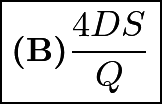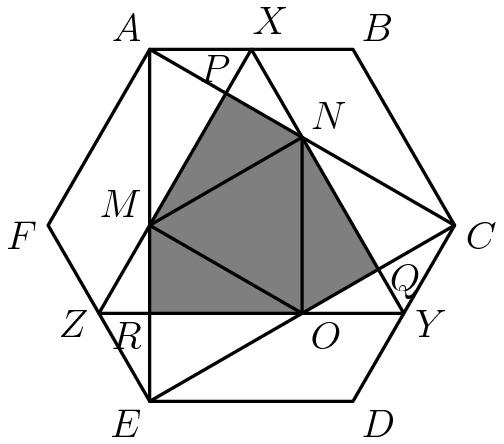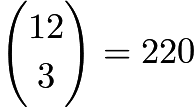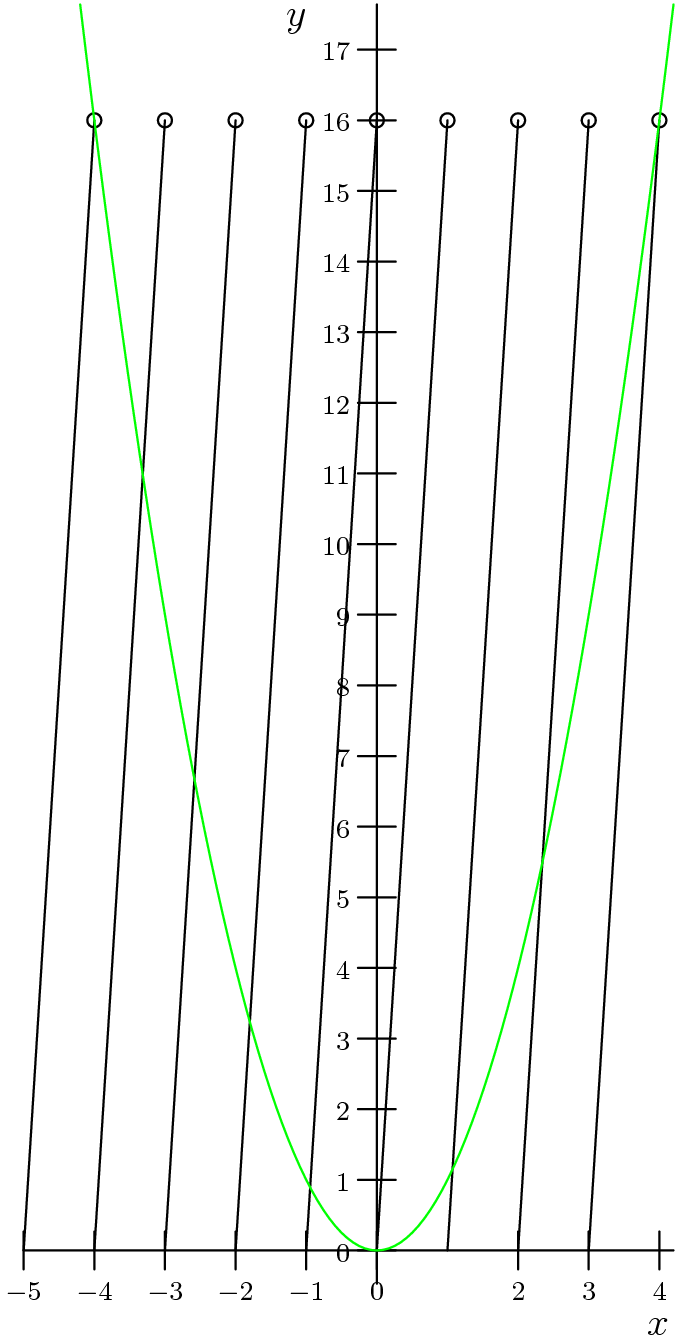- 翰林提供学术活动、国际课程、科研项目一站式留学背景提升服务!
- 400 888 0080
2018 AMC 12B ANSWER KEY答案解析
Problem 1
Solution 1
The area of the pan is ![]() =
= ![]() . Since the area of each piece is
. Since the area of each piece is ![]() , there are
, there are  pieces. Thus, the answer is
pieces. Thus, the answer is ![]() .
.
Solution 2
By dividing the each of the dimensions by ![]() , we get a
, we get a ![]() grid which makes
grid which makes ![]() pieces. Thus, the answer is
pieces. Thus, the answer is ![]() .
.
Problem 2
Solution
Let Sam drive at exactly ![]() mph in the first half hour,
mph in the first half hour, ![]() mph in the second half hour, and
mph in the second half hour, and ![]() mph in the third half hour.
mph in the third half hour.
Due to ![]() , and that
, and that ![]() min is half an hour, he covered
min is half an hour, he covered  miles in the first
miles in the first ![]() mins.
mins.
SImilarly, he covered ![]() miles in the
miles in the ![]() nd half hour period.
nd half hour period.
The problem states that Sam drove ![]() miles in
miles in ![]() min, so that means that he must have covered
min, so that means that he must have covered  miles in the third half hour period.
miles in the third half hour period.
![]() , so
, so  .
.
Therefore, Sam was driving  miles per hour in the third half hour.
miles per hour in the third half hour.
Problem 3
Solution
Using the slope-intercept form, we get the equations ![]() and
and ![]() . Simplifying, we get
. Simplifying, we get![]() and
and ![]() . Letting
. Letting ![]() in both equations and solving for
in both equations and solving for ![]() gives the
gives the ![]() -intercepts:
-intercepts: ![]() and
and ![]() , respectively. Thus the distance between them is
, respectively. Thus the distance between them is 
Problem 4
Solution
The shortest segment that connects the center of the circle to a chord is the perpendicular bisector of the chord. Applying the Pythagorean theorem, we find that![]() The area of a triangle is
The area of a triangle is ![]() , so the answer is
, so the answer is 
Problem 5
Solution 1
Since an element of a subset is either in or out, the total number of subsets of the 8 element set is ![]() . However, since we are only concerned about the subsets with at least 1 prime in it, we can use complementary counting to count the subsets without a prime and subtract that from the total. Because there are 4 non-primes, there are
. However, since we are only concerned about the subsets with at least 1 prime in it, we can use complementary counting to count the subsets without a prime and subtract that from the total. Because there are 4 non-primes, there are ![]() subsets with at least 1 prime so the answer is
subsets with at least 1 prime so the answer is 
Solution 2
We can construct our subset by choosing which primes are included and which composites are included. There are ![]() ways to select the primes (total subsets minus the empty set) and
ways to select the primes (total subsets minus the empty set) and ![]() ways to select the composites. Thus, there are
ways to select the composites. Thus, there are ![]() ways to choose a subset of the eight numbers, or
ways to choose a subset of the eight numbers, or  .
.
Problem 6
Solution
The unit price for a can of soda (in quarters) is ![]() . Thus, the number of cans which can be bought for
. Thus, the number of cans which can be bought for ![]() dollars (
dollars (![]() quarters) is
quarters) is
Problem 7
Solution 1
Change of base makes this 
Solution 2
Using the chain rule for logarithms (![]() ), we get
), we get ![]() .
.
Problem 8
Solution
Draw the Median connecting C to the center O of the circle. Note that the centroid is ![]() of the distance from O to C. Thus, as C traces a circle of radius 12, the Centroid will trace a circle of radius
of the distance from O to C. Thus, as C traces a circle of radius 12, the Centroid will trace a circle of radius  .
.
The area of this circle is ![]() .
.
Problem 9
Solution 1
We can start by writing out the first couple of terms:
![]()
![]()
![]()
![]()
![]()
Looking at the second terms in the parentheses, we can see that ![]() occurs
occurs ![]() times. It goes horizontally and exists
times. It goes horizontally and exists ![]() times vertically. Looking at the first terms in the parentheses, we can see that
times vertically. Looking at the first terms in the parentheses, we can see that ![]() occurs
occurs ![]() times. It goes vertically and exists
times. It goes vertically and exists ![]() times horizontally.
times horizontally.
Thus, we have:
This gives us:
Solution 2

Solution 3

Problem 10
Problem 11
Problem 12
Solution
Let ![]() . Then by Angle Bisector Theorem, we have
. Then by Angle Bisector Theorem, we have ![]() . Now, by the triangle inequality, we have three inequalities.
. Now, by the triangle inequality, we have three inequalities.
 , so
, so  . Solve this to find that
. Solve this to find that  , so
, so  .
. , so
, so  . Solve this to find that
. Solve this to find that  , so
, so  .
.- The third inequality can be disregarded, because
 has no real roots.
has no real roots.
Then our interval is simply ![]() to get
to get ![]()
![]() .
.
Problem 13
Solution 1 (Drawing an Accurate Diagram)
We can draw an accurate diagram by using centimeters and scaling everything down by a factor of ![]() . The centroid is the intersection of the three medians in a triangle.
. The centroid is the intersection of the three medians in a triangle.
After connecting the ![]() centroids, we see that the quadrilateral looks like a square with side length of
centroids, we see that the quadrilateral looks like a square with side length of ![]() . However, we scaled everything down by a factor of
. However, we scaled everything down by a factor of ![]() , so the length is
, so the length is ![]() . The area of a square is
. The area of a square is ![]() , so the area is:
, so the area is:
Solution 2
The centroid of a triangle is ![]() of the way from a vertex to the midpoint of the opposing side. Thus, the length of any diagonal of this quadrilateral is
of the way from a vertex to the midpoint of the opposing side. Thus, the length of any diagonal of this quadrilateral is ![]() . The diagonals are also parallel to sides of the square, so they are perpendicular to each other, and so the area of the quadrilateral is
. The diagonals are also parallel to sides of the square, so they are perpendicular to each other, and so the area of the quadrilateral is  ,
,  .
.
Solution 3
The midpoints of the sides of the square form another square, with side length ![]() and area
and area ![]() . Dilating the corners of this square through point
. Dilating the corners of this square through point ![]() by a factor of
by a factor of ![]() results in the desired quadrilateral (also a square). The area of this new square is
results in the desired quadrilateral (also a square). The area of this new square is ![]() of the area of the original dilated square. Thus, the answer is
of the area of the original dilated square. Thus, the answer is 
Solution 4
We put the diagram on a coordinate plane. The coordinates of the square are ![]() and the coordinates of point P are
and the coordinates of point P are ![]() By using the centroid formula, we find that the coordinates of the centroids are
By using the centroid formula, we find that the coordinates of the centroids are  and
and  Shifting the coordinates down by
Shifting the coordinates down by  does not change its area, and we ultimately get that the area is equal to the area covered by
does not change its area, and we ultimately get that the area is equal to the area covered by ![]() which has an area of
which has an area of 
Problem 14
Solution 1
Let Joey's age be ![]() , Chloe's age be
, Chloe's age be ![]() , and we know that Zoe's age is
, and we know that Zoe's age is ![]() .
.
We know that there must be ![]() values
values ![]() such that
such that ![]() where
where ![]() is an integer.
is an integer.
Therefore, ![]() and
and ![]() . Therefore, we know that, as there are
. Therefore, we know that, as there are ![]() solutions for
solutions for ![]() , there must be
, there must be ![]() solutions for
solutions for ![]() . We know that this must be a perfect square. Testing perfect squares, we see that
. We know that this must be a perfect square. Testing perfect squares, we see that ![]() , so
, so ![]() . Therefore,
. Therefore, ![]() . Now, since
. Now, since ![]() , by similar logic,
, by similar logic, ![]() , so
, so ![]() and Joey will be
and Joey will be ![]() and the sum of the digits is
and the sum of the digits is 
Solution 2
Here's a different way of saying your solution.
If a number is a multiple of both Chloe's age and Zoe's age, then it is a multiple of their difference. Since the difference between their ages does not change, then that means the difference between their ages has 9 factors. Therefore, the difference between Chloe and Zoe's age is 36, so Chloe is 37, and Joey is 38. The common factor that will divide both of their ages is 37, so Joey will be 74. 7 + 4 = 
Solution 3
Similar approach to above, just explained less concisely and more in terms of the problem (less algebra-y)
Let ![]() denote Chloe's age,
denote Chloe's age, ![]() denote Joey's age, and
denote Joey's age, and ![]() denote Zoe's age, where
denote Zoe's age, where ![]() is the number of years from now. We are told that
is the number of years from now. We are told that ![]() is a multiple of
is a multiple of ![]() exactly nine times. Because
exactly nine times. Because ![]() is
is ![]() at
at ![]() and will increase until greater than
and will increase until greater than ![]() , it will hit every natural number less than
, it will hit every natural number less than ![]() , including every factor of
, including every factor of ![]() . For
. For ![]() to be an integral multiple of
to be an integral multiple of ![]() , the difference
, the difference ![]() must also be a multiple of
must also be a multiple of ![]() , which happens if
, which happens if ![]() is a factor of
is a factor of ![]() . Therefore,
. Therefore, ![]() has nine factors. The smallest number that has nine positive factors is
has nine factors. The smallest number that has nine positive factors is ![]() (we want it to be small so that Joey will not have reached three digits of age before his age is a multiple of Zoe's). We also know
(we want it to be small so that Joey will not have reached three digits of age before his age is a multiple of Zoe's). We also know ![]() and
and ![]() . Thus,
. Thus,![]()
![]() By our above logic, the next time
By our above logic, the next time ![]() is a multiple of
is a multiple of ![]() will occur when
will occur when ![]() is a factor of
is a factor of ![]() . Because
. Because ![]() is prime, the next time this happens is at
is prime, the next time this happens is at ![]() , when
, when ![]() .
. 
Problem 15
Solution 1 (For Dummies)
Analyze that the three-digit integers divisible by ![]() start from
start from ![]() . In the
. In the ![]() 's, it starts from
's, it starts from ![]() . In the
. In the ![]() 's, it starts from
's, it starts from ![]() . We see that the units digits is
. We see that the units digits is ![]() and
and ![]()
Write out the 1- and 2-digit multiples of ![]() starting from
starting from ![]() and
and ![]() Count up the ones that meet the conditions. Then, add up and multiply by
Count up the ones that meet the conditions. Then, add up and multiply by ![]() , since there are three sets of three from
, since there are three sets of three from ![]() to
to ![]() Then, subtract the amount that started from
Then, subtract the amount that started from ![]() , since the
, since the ![]() 's all contain the digit
's all contain the digit ![]() .
.
We get:![]()
This gives us:
Solution 2
There are ![]() choices for the last digit (
choices for the last digit (![]() ), and
), and ![]() choices for the first digit (exclude
choices for the first digit (exclude ![]() ). We know what the second digit mod
). We know what the second digit mod ![]() is, so there are
is, so there are ![]() choices for it (pick from one of the sets
choices for it (pick from one of the sets ![]() ). The answer is
). The answer is ![]() (Plasma_Vortex)
(Plasma_Vortex)
Problem 16
Solution
The answer is the same if we consider ![]() Now we just need to find the area of the triangle bounded by
Now we just need to find the area of the triangle bounded by ![]() and
and  This is just
This is just ![]()
Problem 17
Solution 1
We claim that, between any two fractions ![]() and
and ![]() , if
, if ![]() , the fraction with smallest denominator between them is
, the fraction with smallest denominator between them is  . To prove this, we see that
. To prove this, we see that
 which reduces to
which reduces to ![]() . We can easily find that
. We can easily find that ![]() , giving an answer of
, giving an answer of  .
.
Solution 2 (requires justification)
Assume that the difference  results in a fraction of the form
results in a fraction of the form ![]() . Then,
. Then,
![]()
Also assume that the difference  results in a fraction of the form
results in a fraction of the form ![]() . Then,
. Then,
![]()
Solving the system of equations yields ![]() and
and ![]() . Therefore, the answer is
. Therefore, the answer is 
Solution 3
Cross-multiply the inequality to get![]()
Then,![]()
![]()
Since ![]() ,
, ![]() are integers,
are integers, ![]() is an integer. To minimize
is an integer. To minimize ![]() , start from
, start from ![]() , which gives
, which gives  . This limits
. This limits ![]() to be greater than
to be greater than ![]() , so test values of
, so test values of ![]() starting from
starting from ![]() . However,
. However, ![]() to
to ![]() do not give integer values of
do not give integer values of ![]() .
.
Once ![]() , it is possible for
, it is possible for ![]() to be equal to
to be equal to ![]() , so
, so ![]() could also be equal to
could also be equal to  The next value,
The next value, ![]() , is not a solution, but
, is not a solution, but ![]() gives
gives  . Thus, the smallest possible value of
. Thus, the smallest possible value of ![]() is
is ![]() , and the answer is
, and the answer is  .
.
Solution 4
Graph the regions  and
and  . Note that the lattice point
. Note that the lattice point ![]() is the smallest magnitude one which appears within the region bounded by the two graphs. Thus, our fraction is
is the smallest magnitude one which appears within the region bounded by the two graphs. Thus, our fraction is ![]() and the answer is
and the answer is  .
.
Remark: This also gives an intuitive geometric proof of the mediant using vectors.
Solution 5 (Using answer choices to prove mediant)
As the other solutions do, the mediant  is between the two fractions, with a difference of
is between the two fractions, with a difference of  . Suppose that the answer was not
. Suppose that the answer was not ![]() , then the answer must be
, then the answer must be ![]() or
or ![]() as otherwise
as otherwise ![]() would be negative. Then, the possible fractions with lower denominator would be
would be negative. Then, the possible fractions with lower denominator would be  for
for ![]() and
and  for
for ![]() which are clearly not anywhere close to
which are clearly not anywhere close to 
Problem 18
Solution 1
![]()
![]()
![]()
![]()
![]()
Thus, ![]() .
. ![]()
Solution 2 (A Bit Bashy)
Start out by listing some terms of the sequence.![]()
![]()
![]()
![]()
![]()
![]()
![]()
![]()
![]()
![]()
![]()
![]()
![]()
![]()
![]()
![]() Notice that
Notice that ![]() whenever
whenever ![]() is an odd multiple of
is an odd multiple of ![]() , and the pattern of numbers that follow will always be +3, +2, +0, -1, +0. The closest odd multiple of
, and the pattern of numbers that follow will always be +3, +2, +0, -1, +0. The closest odd multiple of ![]() to
to ![]() is
is ![]() , so we have
, so we have![]()
![]()
![]()
![]()
![]()

Solution 3(Bashy Pattern Finding)
Writing out the first few values, we get: ![]() . Examining, we see that every number
. Examining, we see that every number ![]() where
where ![]() has
has ![]() ,
, ![]() , and
, and ![]() . The greatest number that's 1 (mod 6) and less
. The greatest number that's 1 (mod 6) and less ![]() is
is ![]() , so we have
, so we have ![]()
![]()
Problem 19
Solution 1
Prime factorizing ![]() gives you
gives you ![]() . Looking at the answer choices,
. Looking at the answer choices,  is the smallest number divisible by
is the smallest number divisible by ![]() or
or ![]() .
.
Solution 2
Let the next largest divisor be ![]() . Suppose
. Suppose ![]() . Then, as
. Then, as ![]() , therefore,
, therefore, ![]() However, because
However, because ![]() ,
,![]() . Therefore,
. Therefore, ![]() . Note that
. Note that ![]() . Therefore, the smallest the gcd can be is
. Therefore, the smallest the gcd can be is ![]() and our answer is
and our answer is  .
.
Problem 20
Solution 1

The desired area (hexagon ![]() ) consists of an equilateral triangle (
) consists of an equilateral triangle (![]() ) and three right triangles (
) and three right triangles (![]() ,
, ![]() , and
, and ![]() ).
).
Notice that ![]() (not shown) and
(not shown) and ![]() are parallel.
are parallel. ![]() divides transversals
divides transversals ![]() and
and ![]() into a
into a ![]() ratio. Thus, it must also divide transversal
ratio. Thus, it must also divide transversal ![]() and transversal
and transversal ![]() into a
into a ![]() ratio. By symmetry, the same applies for
ratio. By symmetry, the same applies for ![]() and
and ![]() as well as
as well as ![]() and
and ![]()
In ![]() , we see that
, we see that  and
and  . Our desired area becomes
. Our desired area becomes

Solution 2
Now, if we look at the figure, we can see that the complement of the hexagon we are trying to find is composed of 3 isosceles trapezoids (AXFZ, XBCY, and ZYED), and 3 right triangles (With one vertice on each of X, Y, and Z). We know that one base of each trapezoid is just the side length of the hexagon which is 1, and the other base is 3/2 (It is halfway in between the side and the longest diagonal) with a height of ![]() (by using the Pythagorean theorem and the fact that it is an isosceles trapezoid) to give each trapezoid having an area of
(by using the Pythagorean theorem and the fact that it is an isosceles trapezoid) to give each trapezoid having an area of ![]() for a total area of
for a total area of ![]() (Alternatively, we could have calculated the area of hexagon ABCDEF and subtracted the area of triangle XYZ, which, as we showed before, had a side length of 3/2). Now, we need to find the area of each of the small triangles, which, if we look at the triangle that has a vertice on X, is similar to the triangle with a base of YC = 1/2. Using similar triangles we calculate the base to be 1/4 and the height to be
(Alternatively, we could have calculated the area of hexagon ABCDEF and subtracted the area of triangle XYZ, which, as we showed before, had a side length of 3/2). Now, we need to find the area of each of the small triangles, which, if we look at the triangle that has a vertice on X, is similar to the triangle with a base of YC = 1/2. Using similar triangles we calculate the base to be 1/4 and the height to be ![]() giving us an area of
giving us an area of ![]() per triangle, and a total area of
per triangle, and a total area of ![]() . Adding the two areas together, we get
. Adding the two areas together, we get ![]() . Finding the total area, we get
. Finding the total area, we get ![]() . Taking the complement, we get
. Taking the complement, we get ![]()
Solution 3 (Trig)
Notice, the area of the convex hexagon formed through the intersection of the 2 triangles can be found by finding the area of the triangle formed by the midpoints of the sides and subtracting the smaller triangles that are formed by the region inside this triangle but outside the other triangle. First, let's find the area of the area of the triangle formed by the midpoint of the sides. Notice, this is an equilateral triangle, thus all we need is to find the length of its side. To do this, we look at the isosceles trapezoid outside this triangle but inside the outer hexagon. Since the interior angle of a regular hexagon is ![]() and the trapezoid is isosceles, we know that the angle opposite is
and the trapezoid is isosceles, we know that the angle opposite is ![]() , and thus the side length of this triangle is
, and thus the side length of this triangle is  . So the area of this triangle is
. So the area of this triangle is  Now let's find the area of the smaller triangles. Notice, triangle
Now let's find the area of the smaller triangles. Notice, triangle ![]() cuts off smaller isosceles triangles from the outer hexagon. The base of these isosceles triangles is perpendicular to the base of the isosceles trapezoid mentioned before, thus we can use trigonometric ratios to find the base and height of these smaller triangles, which are all congruent due to the rotational symmetry of a regular hexagon. The area is then
cuts off smaller isosceles triangles from the outer hexagon. The base of these isosceles triangles is perpendicular to the base of the isosceles trapezoid mentioned before, thus we can use trigonometric ratios to find the base and height of these smaller triangles, which are all congruent due to the rotational symmetry of a regular hexagon. The area is then  and the sum of the areas is
and the sum of the areas is  Therefore, the area of the convex hexagon is
Therefore, the area of the convex hexagon is 
Problem 21
Solution 1
Let the triangle have coordinates ![]() Then the coordinates of the incenter and circumcenter are
Then the coordinates of the incenter and circumcenter are ![]() and
and ![]() respectively. If we let
respectively. If we let ![]() then
then ![]() satisfies
satisfies
![]()
![]()
![]() Now the area of our triangle can be calculated with the Shoelace Theorem. The answer turns out to be
Now the area of our triangle can be calculated with the Shoelace Theorem. The answer turns out to be ![]()
Solution 2
Notice that we can let ![]() . If
. If ![]() , then
, then  and
and  . Using shoelace formula, we get
. Using shoelace formula, we get  .
. ![]()
Problem 22
Solution
Suppose our polynomial is equal to![]() Then we are given that
Then we are given that![]() If we let
If we let ![]() then we have
then we have![]() The number of solutions to this equation is simply
The number of solutions to this equation is simply  by stars and bars, so our answer is
by stars and bars, so our answer is ![]()
Problem 23
Solution
Suppose that Earth is a unit sphere with center ![]() We can let
We can let The angle
The angle ![]() between these two vectors satisfies
between these two vectors satisfies  yielding
yielding ![]() or
or ![]()
Problem 24
Solution
This rewrites itself to ![]() .
.
Graphing ![]() and
and ![]() we see that the former is a set of line segments with slope
we see that the former is a set of line segments with slope ![]() from
from ![]() to
to ![]() with a hole at
with a hole at ![]() , then
, then ![]() to
to ![]() with a hole at
with a hole at ![]() etc.
etc.
Here is a graph of ![]() and
and ![]() for visualization.
for visualization.

Now notice that when ![]() then graph has a hole at
then graph has a hole at ![]() which the equation
which the equation ![]() passes through and then continues upwards. Thus our set of possible solutions is bounded by
passes through and then continues upwards. Thus our set of possible solutions is bounded by ![]() . We can see that
. We can see that ![]() intersects each of the lines once and there are
intersects each of the lines once and there are ![]() lines for an answer of
lines for an answer of  .
.
Alternative, Bashy Solution
Same as the first solution, ![]() .
.
We can write ![]() as
as ![]() . Expanding everything, we get a quadratic in
. Expanding everything, we get a quadratic in ![]() in terms of
in terms of ![]() :
: ![]()
We use the quadratic formula to solve for {x}: 
Since ![]() , we get an inequality which we can then solve. After simplifying a lot, we get that
, we get an inequality which we can then solve. After simplifying a lot, we get that ![]() .
.
Solving over the integers, ![]() , and since
, and since ![]() is an integer, there are
is an integer, there are  solutions. Each value of
solutions. Each value of![]() should correspond to one value of
should correspond to one value of ![]() , so we are done.
, so we are done.
Another Solution
Let ![]() where
where ![]() is the integer portion of
is the integer portion of ![]() and
and ![]() is the decimal portion. We can then rewrite the problem below:
is the decimal portion. We can then rewrite the problem below:
![]()
From here, we get
![]()
Solving for ![]() ...
...
![]()
![]()
Because ![]() , we know that
, we know that ![]() cannot be less than or equal to
cannot be less than or equal to ![]() nor greater than or equal to
nor greater than or equal to ![]() . Therefore:
. Therefore:
![]()
There are 199 elements in this range, so the answer is ![]()
Yet Another Solution
As in the first solution, we can write ![]() .
.
Now obviously, ![]() .
.
So, x can get be ![]() .
.
Hence, the answer is ![]() .
.
-Pi_3.14_Squared
Problem 25
Solution 1
Let ![]() be the center of circle
be the center of circle ![]() for
for ![]() , and let
, and let ![]() be the intersection of lines
be the intersection of lines ![]() and
and ![]() . Because
. Because ![]() , it follows that
, it follows that ![]() is a
is a ![]() triangle. Let
triangle. Let ![]() ; then
; then ![]() and
and ![]() . The Law of Cosines in
. The Law of Cosines in ![]() gives
gives![]() which simplifies to
which simplifies to ![]() . The positive solution is
. The positive solution is ![]() . Then
. Then ![]() , and the required area is
, and the required area is The requested sum is
The requested sum is ![]() .
.
Solution 2
Let ![]() and
and ![]() be the centers of
be the centers of ![]() and
and ![]() respectively and draw
respectively and draw ![]() ,
, ![]() , and
, and ![]() . Note than
. Note than ![]() and
and ![]() are both right. Furthermore, since
are both right. Furthermore, since ![]() is equilateral,
is equilateral, ![]() and
and ![]() . Mark
. Mark ![]() as the base of the altitude from
as the base of the altitude from ![]() to
to ![]() . By special right triangles,
. By special right triangles, ![]() and
and ![]() . since
. since ![]() and
and ![]() , we can find find
, we can find find  . Thus,
. Thus, ![]() . This makes
. This makes  . This makes the answer
. This makes the answer ![]() .
. ![]()

早鸟钜惠!翰林2025暑期班课上线

最新发布
© 2025. All Rights Reserved. 沪ICP备2023009024号-1








